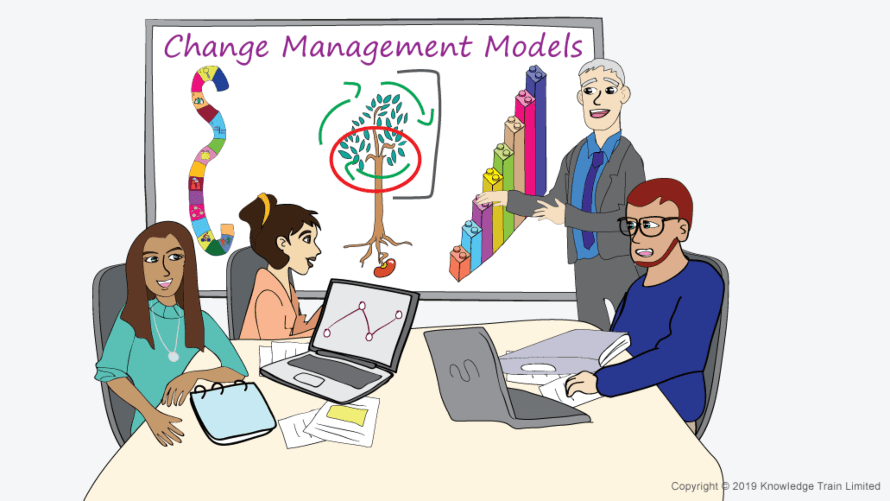
Introduction

Some change management models can be used to analyse change on an enterprise level. Others are best suited to understanding how change affects individual members of staff.
Below, we have information on some of the most popular change models. Click to see colourful infographics of each model.
Lewin change model
Developed by Kurt Lewin in the 19040’s, this model remains a cornerstone of organisational change – using a simple 3-step method to successfully implement change in organisations both large and small.
Read more and see a colourful infographic about the Lewin change management model here.
Kotter change model
Kotter’s 8-step model is suitable for large change initiatives in complex organisations. Kotter expanded on the work of Kurt Lewin to develop a more complex, more intricate model for the management of change.
Read more and see a colourful infographic about the Kotter change management model here.
Peter Senge model
Peter Senge looked at change in terms of biological and ecological metaphors. Using this perspective, he developed a robust model for the management of change, particularly regarding the effect on individual members of staff.
Read more and see a colourful infographic about the Senge change management model here.
Satir change model
Virginia Satir was an author and therapist. Satir’s model was made to help therapists understand the human response to death and trauma. Interestingly, this model was quickly appropriated by quick-thinking change managers and repurposed to help reduce the impact of change on businesses.
Read more and see a colourful infographic about the Satir change model here.
ADKAR model
The ADKAR model breaks change into 5 component elements — Awareness, Desire, Knowledge, Ability, and Reinforcement. The ADKAR model is also a key element of the Prosci change management methodology.
Read more and see a colourful infographic about the ADKAR model here.
McKinsey 7-S model
The McKinsey 7-S model is a technique used by change managers and business analysts alike. Based on academic research and practical experience, the McKinsey model helps change managers coordinate change programmes, tracking their progress, resolve issues, and facilitate transparent, effective communication.
Read more about the McKinsey 7-S model here.
Kubler Ross change curve
Another odd accompaniment to the change managers’ arsenal, the Kubler Ross curve, was designed to model the human reaction to loss and grief. Once again, change managers saw this as a good way to understand the impact of business change on human lives and appropriated the model for their own use.
Read more and see a colourful infographic about the Kubler Ross change curve here.
